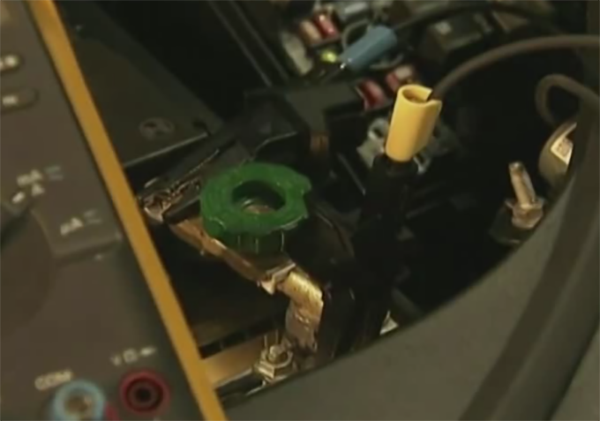2016 Cadillac ATS-V: GM TechLink: Vehicle Time Out for Parasitic Draw Testing
Estimated Reading Time: 3 MinutesGM TechLink
September 18, 2016
Many control modules in a vehicle stay awake for different amounts of time after the ignition is turned off. To help with diagnosis of parasitic drains, a Vehicle Time Out chart has been developed for 2015 Cadillac ATS, ATS-V; 2017 LaCrosse, CT6, CTS, XT5, Corvette, Acadia (VIN N); and 2016 Camaro models listing the times after a specific event that certain modules stay awake. Components most likely to cause a parasitic draw on a vehicle’s battery are switches, relays, and control modules.
The charts lists the amount of time the modules controlling the HVAC, Flashers, Infotainment/DIC, Drive Mode Switch, Park Assist, Headlamps, and Engine Start/Stop features are awake after each of three specific events — door open/close, key fob unlock, and passive unlock.
Refer to Bulletin #16-NA-272 for the chart. It is not a complete listing of all modules that may be active after the ignition is turned off (for example, the interior lights), but includes the most common. Of the modules or switches that are listed, the backlighting or status LED will be on for the time listed.
Powering Down
After the ignition is turned off, the control modules will begin to go to sleep. However, all control modules do not go to sleep at the same time; some may take up to 30 minutes or longer after turning the ignition off before going to sleep. Other modules may periodically wake up and then go back to sleep. It can take up to two hours before all systems power down allowing the parasitic draw test to pass. An occasional increase in the parasitic draw is normal as long as it returns within one second. These are all normal conditions.
There are many things that can prevent a vehicle from completely going to sleep and passing the parasitic draw test. Make sure all the following conditions are met before performing the parasitic current draw test using the EL 38758 parasitic draw test switch. (Fig. 27)
• Ignition off
• Key out of the ignition switch – when not equipped with keyless access and start
• Retained Accessory Power off – open and close the driver’s door after turning off the ignition
• Scan tool not communicating with a vehicle control module – in some cases it may need to be disconnected from the DLC
• All access doors closed
• Headlamps off – Auto headlamps disabled
• Any delay lighting off
• Disable any underhood lamp, if equipped
• HVAC afterblow off
• Any accessory that can work with ignition off is inactive or off
• Wait up to two minutes or longer, after all other listed conditions are met

Fig. 27
Some parasitic drains can be difficult to diagnose, especially if other components are causing a module to remain awake. For example, Bulletin #16-NA-126 covers an intermittent dead battery condition on 2016 Cascada models. In this case, if the battery drops below 65% state of charge, the tail lamps send a diagnostic request to the BCM, which causes everything on the BUS to wake up and remain awake until the battery drains. A new tail lamp part number has been released to address this condition.
For additional information on parasitic drains and related conditions, always review the latest bulletins as well as the parasitic drain diagnostics in the appropriate Service Information.
– Thanks to Rob Ritz